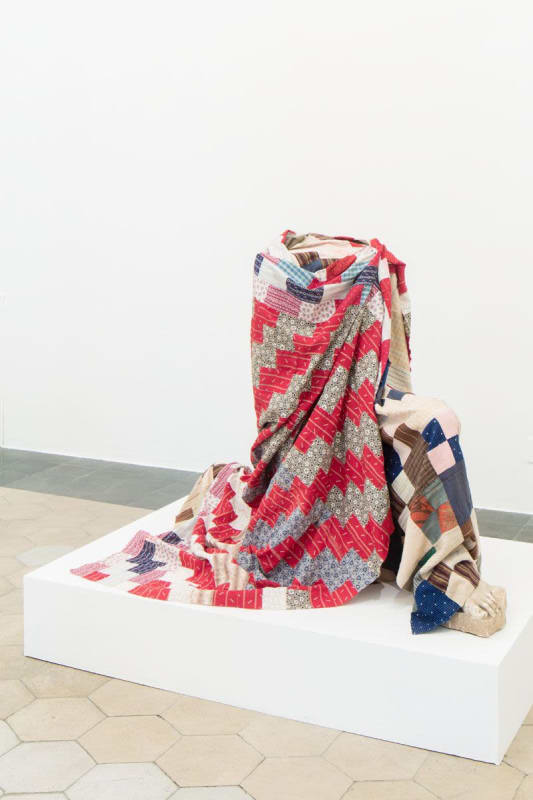BY PAUL LASTER
Fresh off his first solo show at New York’s Marianne Boesky Gallery, exhibiting now at the Weatherspoon Art Museum in Greensboro, North Carolina, and prepping a number of other projects including a solo booth with David Castillo Gallery at the 2018 Armory Show, Sanford Biggers also recently landed the coveted Rome Prize. GARAGE caught up with the artist, recently characterized as "under-sung" by the New Yorker's Vinson Cunningham, as he embarked on a yearlong residency at the Italian capital's American Academy.
GARAGE: Has Rome changed much since you were last here?
Sanford Biggers: I lived in Florence for a year as an undergraduate. During that time I traveled through Europe multiple times, but only came to Rome for one day. I was planning on sightseeing, but early in the morning my friend got pickpocketed by a bunch of kids. We spent the rest of the day at the embassy getting him a new passport so he could catch his flight home.
When I first got here this time around I went up to the terrace at the academy and looked across the full city—it was overwhelming, I had no idea where to begin. There are so many fascinating moments—architecturally, artistically, and historically. Being at the academy is great, but it can also be insular. There’s a place to work and free meals, so you have to push yourself to get out. Once you do there’s 3,000 years of history facing you. I typically just go out walking and stumble upon things.
What schedule are you keeping in the studio? Are you working with any deadlines or just taking things as they come?
I’m usually a night worker—although in this situation it’s turning out to be from mid-afternoon to midnight. There are some deadlines, but I’m procrastinating because I just want to be in the studio with a free head. Deadlines are helpful, though—they put a fire under my tail. My current one is getting some stuff ready for the David Castillo Gallery Armory Show booth. Then I'll be making work for a group show here at the academy, and for another one in Florence.
Did you bring any works-in-progress with you?
I came with a bunch of pieces that were around my New York studio, but mainly so I’d have some visuals to fill the walls. I also didn’t want to jump right back into making what I had been making. I wanted to give myself a little distance, so that I could discover what the next thing might be.
Have you found any new materials here?
I’ve looked. I’ve started going to some local fabric shops. My next trip is to the marble district.
Do you have specific things that you want to accomplish?
Yes, I want to start prototyping this idea of doing patchwork imagery on slabs of marble—interpreting quilt forms and the geometry from quilts onto that material. I’m painting them and then scrubbing the paint off and painting them again, so that it has this palimpsest-like quality. I want to play with the history of these materials and what they mean regionally and socially.
Did you have to write a proposal to get accepted to the academy, or are artists nominated?
For the full-year residency you apply with a project. Mine was about looking at remnants—figurative and architectural—and how they’re interpreted over centuries. What does it mean when a sculpture is removed from its original location, gets broken in the process, then gets erected elsewhere? What does that mean about who moved it, the erasure of its original meaning, and the usurping of power? I’m thinking about all of this in relationship to my BAM series [Biggers had the limbs shot off African statues for a series of works addressing police brutality] and the figures I’ve been using. What does it mean to take those figures out of their original context, remove parts from them, and then place them in another situation? How does that twist the history of the object and create new readings?
Will you be doing any shooting while you’re in Rome?
No, I’ll be doing more sculpting. Outside of the conceptual concerns, I have a formal interest in returning to classical figures as well as fragments of them.
There are plenty of those in the city!
They’re right here in the courtyard.
It’s interesting because the process of quilting involves making things from remnants.
Exactly, and even before I was using the quilts I was already cobbling together found objects, modifying and transforming them. I consider that to be a conceptual form of patchwork. The quilt became a metaphor for that, and now I’m expanding on it again to consider different materials, different periods, and different locales.


